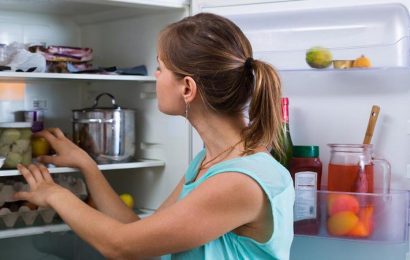Now that you’ve got your pots, pans, and knives, are you ready to start cooking? Not just yet. There are some other tools that you’ll need in your kitchen to whip up tasty, healthful meals.
If you like to peruse cooking catalogs or meander through cooking stores, you’re probably amazed at all of the gadgets and gizmos that are out there. There’s a tool for just about everything, from pitting olives to hulling strawberries to getting that pesky skin off garlic. It’s hard to know what you really need, and if space is an issue in your kitchen, there’s no way you’d have room for all that stuff anyway. What often ends up happening is that you buy some nifty gadget that you think you just can’t live without; soon, it ends up buried in a drawer somewhere, never to be used.
So, just as we’ve done for the pots, pans, and knives, let’s look at what utensils and other tools you really need to have on hand (and feel free to add your own, too!).
Must-Haves:
- Wooden spoons. One might argue that these really aren’t necessary, since you can get by with a silicone cooking spoon or spatula. But I find that I always reach for wooden spoons, whether I’m stirring pasta into boiling water or mixing up some egg salad.
Wooden spoons are inexpensive, sanitary, and easy to care for. You should hand wash them (washing them in a dishwasher can dry them out), and if they start to look too dry, rub them with some mineral oil. You can even buff out stains with sandpaper (or just buy some new ones, since they’re cheap enough). Keep a bunch of these tools on hand and make sure you have different lengths to match the depth of your pots and pans. If you want to get fancy, look for wooden spoons made out of bamboo or beech.
- Heat-resistant spatula. This is a highly versatile tool which can take you straight from the frying pan to the mixing bowl. If you’re sautéing or stir-frying, this spatula will get the job done. You won’t have to worry about food sticking to it and it won’t melt! They usually come in different colors so get a couple that match your kitchen.
- Slotted spoon/serving spoon/ladle. I lumped these three tools together because they often are sold in a set. Slotted spoons are useful when you want to lift a food item out of a sauce, broth, or fat. Serving spoons and ladles come in handy for dishing your creation into a bowl or onto a plate. If you have nonstick pots and pans, use utensils geared for this type of cookware so that you don’t scratch the nonstick surface.
- Tongs. You see TV chefs using these, so why not pick up a pair? They’re great for turning a chicken breast, mixing vegetables into pasta, and tossing salads. Buy a set that is spring-loaded and that has a locking device to save room when you store them.
- Serving spatula. Good to have if you’re, say, flipping pancakes or burgers. You can get a deeper spatula for serving lasagna out of a pan.
- Whisk. You might think only pastry chefs or bakers need whisks, but you need one too! Whisks are essential for making gravies (they help get those pesky lumps out!) and sauces, and are great for whipping up eggs for an omelet.
- Measuring spoons. You probably have a set of these lurking in your kitchen drawer. These are spoons that typically come in a set of at least four: 1/4 teaspoon, 1/2 teaspoon, 1 teaspoon, and 1 tablespoon. Sure, you can always throw in a pinch of this or a dash of that when you’re cooking, but there will be times when you need a more precise measurement (especially if you bake). And using your flatware teaspoons and tablespoons won’t give you an accurate measurement.
- Measuring cups. You need a set of dry measuring cups for measuring foods such as rice, pasta, peanut butter, flour, and sugar. A liquid measuring cup (usually glass) is needed for measuring out liquids (obviously) such as milk, juice, oil, and broth.
- Vegetable peeler. I know, dietitians tell you to eat the skin and peels of fruits and vegetables whenever possible, but there are times when you’ll need to peel a potato, for example. Get a good peeler (I like the ones that are Y-shaped) and make sure it feels good in your hand; otherwise, you’ll soon get fatigued.
- Meat thermometer. To make sure your meat and poultry is thoroughly cooked, keep a meat thermometer on hand. There are several kinds to choose from, ranging from the “old fashioned” liquid thermometers to electronic probes to digital thermometers. Some give quicker readings than others.
Did I leave anything out? What’s essential in YOUR kitchen?




